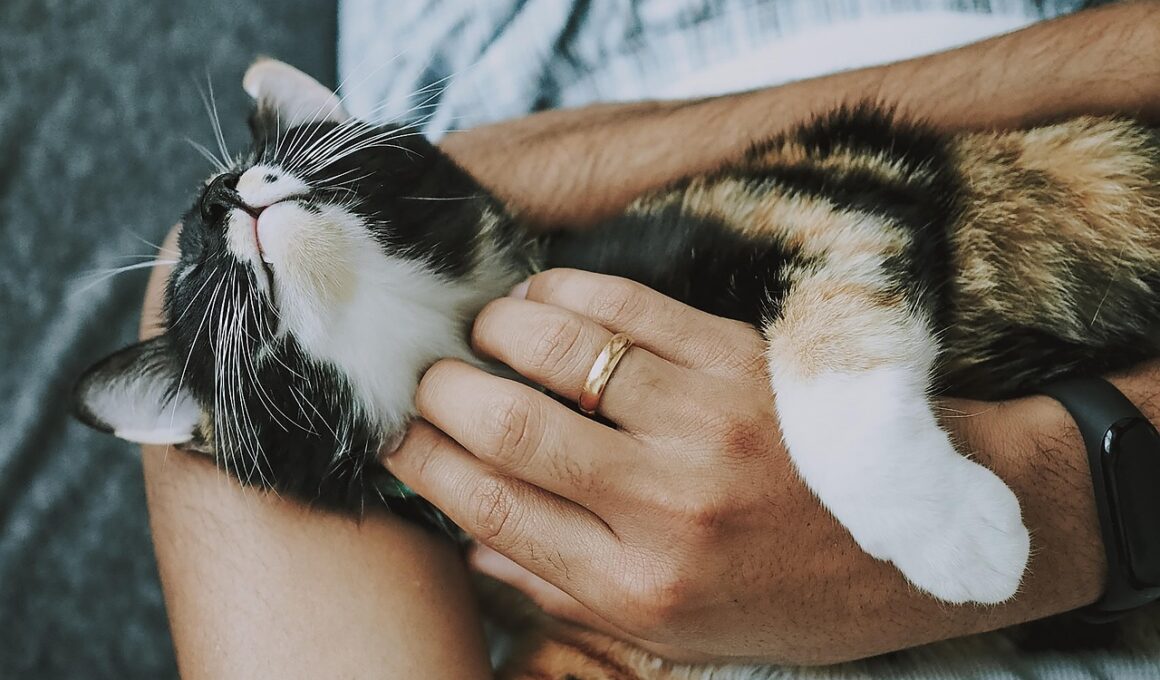Understanding the Pathophysiology of Cat Gingivostomatitis
Cat gingivostomatitis is a complex inflammatory condition affecting the oral cavity of cats. It primarily involves inflammation of the gums (gingiva) and the oral tissues (stomatitis). Understanding the pathophysiology of this condition is critical for veterinarians and cat owners alike. Recent research indicates that the underlying causes may include an abnormal immune response to plaque bacteria and viral infections, particularly feline calicivirus and feline herpesvirus. This condition often leads to significant pain, making it challenging for cats to eat and consequently affecting their quality of life. The pathophysiology is influenced by various factors, including genetics, age, and the overall health of the cat. Often, affected cats show signs of prolonged inflammation, which can lead to tissue destruction if not properly addressed. Various studies suggest that feline gingivostomatitis could be a result of a combination of local and systemic factors. Diagnosis typically involves a thorough oral examination, laboratory tests, and sometimes biopsies. Understanding these factors can lead to better management and treatment options. Owners should work closely with veterinarians to devise a comprehensive treatment plan for affected cats to improve their outcomes.
Comprehensive dental care is crucial to manage the symptoms and treatment of gingivostomatitis in cats. Since inflammation of the gingiva can lead to severe discomfort for the animal, regular dental check-ups are essential. A professional dental cleaning may be necessary depending on the severity of the condition. This cleaning usually involves scaling and polishing, removing tartar and plaque build-up. Regular at-home dental care, including brushing your cat’s teeth and providing dental treats, can also help to prevent further disease progression. Additionally, some veterinarians may recommend specific diets formulated to support oral health. These diets may include ingredients that help to reduce plaque accumulation and promote healthy gums. It is imperative for owners to recognize early signs of dental disease, such as bad breath, difficulty eating, or excessive drooling. Immediate veterinary intervention can often prevent more severe health issues down the line. Pain management is another crucial aspect, as many affected cats experience significant discomfort. The combination of professional veterinary care and dedicated home care can lead to improved health outcomes for cats suffering from gingivostomatitis, enhancing their overall well-being.
Immune System Involvement in Gingivostomatitis
The immune system plays a pivotal role in the development and progression of feline gingivostomatitis. Research shows that an abnormal immune response may lead to chronic inflammation of the oral cavity, exacerbating the condition. The immune system incorrectly identifies oral bacteria as threats, triggering an inflammatory response that harms the tissues instead of protecting them. Many affected cats show elevated levels of specific inflammatory markers, indicating that their immune systems are on high alert against perceived threats. It’s fascinating to observe how environmental factors and pathogens can influence the immune responses in these felines. Genetic predisposition may also play a role, with some breeds being more susceptible than others. Veterinary researchers are investigating potential therapies that target the immune response, aiming to recalibrate the cat’s immune system to reduce inflammation effectively. Certain medications, such as corticosteroids and immune modulators, may help in managing this condition. Thorough understanding of the immune mechanisms involved enables better targeted treatments and supports the development of preventive strategies. As we learn more about immune interactions, hope increases for more effective treatments for this painful disease in cats.
Interleukin-1 (IL-1) has been increasingly recognized as a significant factor in the pathophysiology of feline gingivostomatitis. This pro-inflammatory cytokine promotes the inflammatory response, leading to tissue destruction in the mouth. High levels of IL-1 have been correlated with the severity of gingivitis in affected cats. Interestingly, studies suggest that blocking IL-1 may help alleviate symptoms, providing a strategic avenue for therapeutic intervention. Research is being directed toward understanding the signaling pathways involved and how they can be manipulated for better outcomes. Other cytokines and inflammatory mediators are also being explored to develop a comprehensive understanding of inflammatory processes in gingivostomatitis. The role of chronic inflammation in exacerbating gingivostomatitis has led to the necessity for longitudinal studies to evaluate the progression of the disease over time. As new information on the involvement of IL-1 becomes available, veterinary practitioners can tailor treatments that specifically address these pathways. The goal is to develop immunotherapies that do not just manage symptoms but aim to provide long-term resolution of inflammation. Further studies can augment treatment protocols and improve feline quality of life.
Advancements in Treatment Protocols
As our understanding of feline gingivostomatitis evolves, new treatment protocols are emerging that show promise for affected cats. Traditional treatments have often included tooth extractions and anti-inflammatory medications, but more recently, immunomodulatory therapies are gaining traction. These therapies aim to address the root cause of the immune response driving the disease, providing a more holistic approach to treatment. One such advancement involves the use of monoclonal antibodies that specifically target inflammatory mediators, effectively reducing inflammation without the extensive side effects of steroid treatments. Moreover, advancements in dental procedures, including the use of laser therapy, have shown effectiveness in managing symptoms with reduced discomfort for the cat. These treatments not only help to alleviate symptoms but also promote healing in the oral cavity. Ongoing research is vital for determining optimal treatment combinations that include both conventional and novel approaches. Collaboration among veterinarians, researchers, and pet owners is essential to monitor the efficacy of these new strategies. As we continue to study gingivostomatitis, the prospects for better quality of life for affected cats remain positive.
The potential role of genetics in feline gingivostomatitis is undergoing enhanced scrutiny as researchers strive to understand this condition. Certain breeds appear to exhibit higher incidences of gingivostomatitis, suggesting a hereditary component. Genetic predisposition may influence the immune response, making some cats more susceptible to inflammation. Family history may provide important cues in both diagnosis and treatment planning. Recent studies have started identifying particular genetic markers associated with immune responses and inflammatory conditions in felines. Understanding the genetic factors involved can lead to early identification and interventions for at-risk cats. Additionally, veterinarians might use genetic screening tests to better predict the likelihood of developing gingivostomatitis. With advancements in genetic research, tailored interventions based on genetic make-up may be feasible in the future. Ethical considerations remain important as we advance in this field, ensuring that genetic data is used responsibly. Besides potential treatments, genetic understanding can also empower breeders to make informed decisions. Overall, unraveling the genetic aspects of gingivostomatitis is crucial for developing effective prevention strategies and therapies.
The Role of Owner Awareness
Owner awareness plays a crucial role in the management of feline gingivostomatitis. Educating cat owners about the signs and symptoms of oral disease can lead to early detection and prompt treatment. Recognizing issues such as bad breath, difficulty eating, and frequent pawing at the mouth is vital. Regular dental check-ups should be emphasized as part of routine feline healthcare. Many cat owners are unaware of how significantly oral health impacts overall well-being. By promoting education on the importance of dental care, owners can better care for their feline companions. Furthermore, discussion of preventive measures—such as dental cleanings, at-home dental care products, and dietary considerations—can empower owners to play an active role in their cat’s dental health. This proactive approach can help reduce the incidence of severe dental conditions, including gingivostomatitis. Maintaining open lines of communication with veterinarians is essential, as owners can report any changes in their cat’s behavior or eating habits. This information allows veterinarians to adjust treatment plans accordingly. When owners are well-informed, their pets benefit significantly from a holistic care approach that encompasses dental health, leading to overall happier lives.
In conclusion, feline gingivostomatitis is a complex condition, rooted in the intricate interplay of immune responses, genetics, and environmental factors. Understanding the pathophysiology of this disease provides pathways to more effective treatments and improved quality of life for afflicted cats. The ongoing research is promising, revealing new avenues for therapy, particularly concerning immune modulation and genetic factors. Advancements in treatment protocols, including the role of monoclonal antibodies, have opened doors for affecting symptomatic relief while tackling the underlying causes. Owner education cannot be overlooked, as informed cat guardians are key players in the early detection and effective management of gingivostomatitis. By collaborating with veterinarians, owners can ensure timely interventions and optimal care. The emotional and physical challenges faced by cats suffering from this condition underscore the necessity for ongoing research and comprehensive care approaches. As veterinary medicine continues to evolve, the aim is to lessen the burden of this painful disease on cats and their families. Ultimately, improving preventive strategies and treatment options remains vital in the pursuit of better feline dental health and overall well-being.


